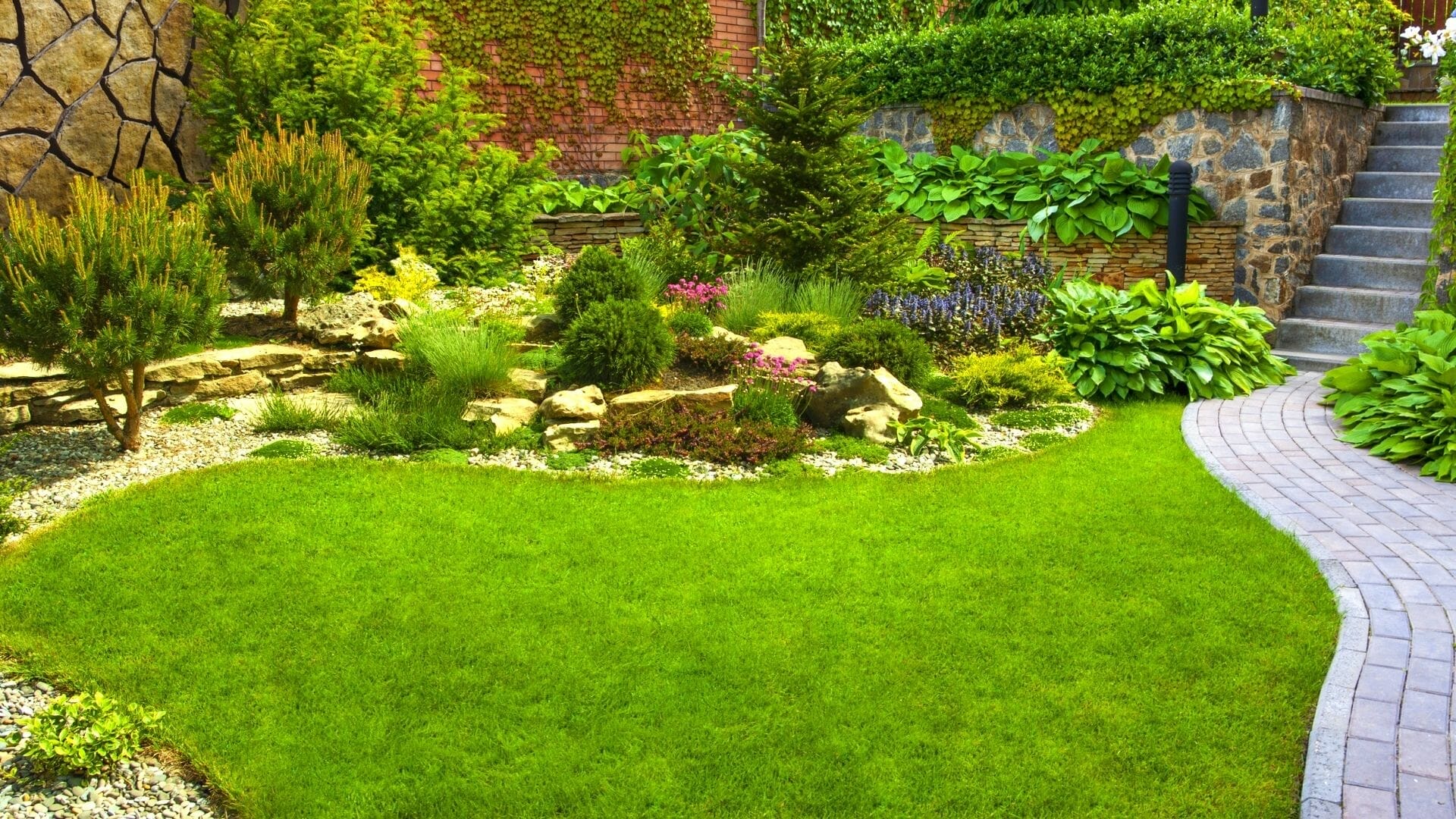Specialist Landscaping Providers for Lasting Outdoor Improvement
Enhancing exterior areas through specialist landscaping solutions can provide even more than simply visual charm; it can grow a sustainable setting that benefits both homeowner and the planet. From selecting indigenous plants to executing water preservation methods and using eco-friendly hardscape options, the opportunities for lasting outside makeover are vast. By comprehending the importance of upkeep practices that sustain sustainability, expert landscapers can genuinely make a long lasting impact on the exterior spaces they service.
Benefits of Lasting Landscape Design
Sustainable landscaping supplies numerous environmental and financial advantages for both home proprietors and the neighborhood. By implementing sustainable techniques such as xeriscaping, utilizing indigenous plants, and minimizing water usage, building owners can substantially decrease their environmental impact. These approaches not only save water yet additionally advertise biodiversity and decrease the demand for hazardous pesticides and plant foods.

From a neighborhood perspective, lasting landscaping plays a vital function in improving air and water top quality, decreasing city heat island effects, and providing environments for regional wildlife. These benefits add to developing healthier and much more sustainable atmospheres for every person to delight in.
Native Plants Choice and Layout
When planning a landscape layout, picking native plants is important for enhancing sustainability and ecological community health. Native plants are adapted to the regional climate, soil conditions, and parasites, making them low-maintenance and extra durable to flourish in their native environment. Incorporating indigenous plants right into landscaping creates not just enhances biodiversity but likewise supports pollinators, valuable bugs, and neighborhood wild animals.
Creating with indigenous plants entails careful consideration of elements such as plant size, growth routine, blossom time, and water requirements to create a lasting and aesthetically enticing landscape. By selecting a varied selection of native plants, landscape designers can produce balanced environments that bring in a range of varieties and add to the overall health and wellness of the setting.
Furthermore, indigenous plants can help in reducing water consumption, reduce the demand for chemical pesticides and fertilizers, and improve dirt top quality via their all-natural processes. With correct selection and style, indigenous plants can transform outdoor spaces right into prospering, lasting landscapes that benefit both the setting and the area.
Water Preservation Strategies
Including indigenous plants into landscaping designs not just improves biodiversity but additionally supports pollinators, advantageous insects, and local wildlife, which underscores the relevance of applying water preservation strategies in landscaping techniques. Water preservation is important for lasting exterior spaces, especially in regions prone to drought or water deficiency. One reliable technique is making use of drip irrigation systems, which provide water directly to the plant's origin zone, decreasing dissipation and runoff. Mulching is one more beneficial technique that helps retain dirt dampness, reduces weed development, and enhances dirt health.

Eco-Friendly Hardscape Solutions
The usage of ecologically conscious products in hardscape design is a critical element of developing sustainable outdoor spaces. Eco-friendly hardscape options encompass a range of methods aimed at reducing environmental effect while improving the looks and capability of exterior areas. Integrating products such as absorptive pavers, reclaimed wood, recycled plastics, and all-natural stone can significantly decrease the ecological impact of hardscape setups.
Permeable pavers, for instance, permit rain to leak into the ground, minimizing drainage and preventing water contamination. Reclaimed timber adds a rustic appeal to exterior home while advertising the reuse of existing sources. Recycled plastics can be changed right into low-maintenance and durable hardscape elements, supplying a sustainable choice to typical materials. All-natural rock sourced from regional quarries lowers transportation discharges and blends harmoniously with the surrounding atmosphere.
Upkeep Practices for Sustainability
To maintain the environmental integrity of environment-friendly hardscape solutions, applying critical upkeep techniques is vital for guaranteeing long-term sustainability in outside landscaping tasks. Regular maintenance not just protects the aesthetic allure of the landscape however additionally adds to its overall sustainability by lowering ecological effect.
One secret maintenance practice for sustainability is proper watering administration. Effective watering strategies, such as drip watering systems or rain harvesting, assistance preserve water and promote plant wellness. Additionally, regular inspection and change of watering systems can prevent water wastefulness and ensure optimum hydration for plants.
Another vital facet of lasting top article maintenance is the accountable use pesticides and fertilizers. Deciding for organic plant foods and using incorporated bug monitoring strategies reduces harmful chemical drainage right into the setting, guarding both plant and environment balance.
Moreover, regular cleansing and upkeep of hardscape features like permeable pavers or rock pathways stop particles buildup and preserve functionality while sustaining water seepage and water drainage, therefore decreasing the risk of erosion and flooding. Landscaping San Marcos. By sticking to these lasting maintenance techniques, exterior landscapes can prosper sympathetically while minimizing their environmental footprint
Verdict
Finally, lasting landscaping supplies countless benefits through using native plants, water preservation straight from the source techniques, environment-friendly hardscape services, and sustainable maintenance practices. By implementing these strategies, outside spaces can be transformed into environmentally-friendly and visually pleasing areas that sustain biodiversity and reduce environmental influence. Spending in specialist landscaping solutions that prioritize sustainability can cause long-term advantages for both the environment and residential property owners.
From choosing indigenous plants to implementing water conservation techniques and utilizing environmentally friendly hardscape solutions, the opportunities for lasting exterior transformation are vast. By executing lasting techniques such as xeriscaping, making use of native plants, and decreasing water usage, residential property owners can substantially reduce their ecological impact. Water preservation is critical for sustainable outdoor rooms, particularly in regions vulnerable to dry spell or water shortage. By implementing these water preservation methods, landscaping professionals can produce gorgeous, sustainable outdoor areas that profit both the setting and the community.
In conclusion, lasting landscape design offers many advantages via the usage of native plants, water conservation methods, environment-friendly hardscape remedies, and lasting upkeep practices.